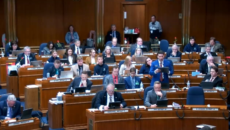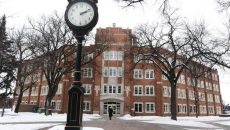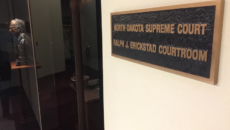City Plans School Building Spending Spree With State Property Tax Relief Payment
To be fair, the Minot School Board is considering more than one option when it comes addressing school growth in the city, and the impact they calculate for property taxes doesn’t take into account the city’s growing property tax base, but even so this illustrates perfectly the problem with trying to solve the property tax problem with state bailouts (emphasis mine):
During the third public forum held this spring, consultant DLR group laid out six possible options that would help address the explosive growth that is expected to continue in the district. Most would call for voters to approve a bond issue in late fall.
The first, and most expensive, proposal would cost a combined $145.5 million. It would pay for construction of two new K-5 elementary schools, both with the capacity for 600 students; converting Minot High School-Central Campus into a fourth middle school, building a second high school and renovating Magic City Campus and having two 9-12 high schools, both with the capacity for 1,400 students. The consultant estimated that this would cost the owner of a $200,000 home in the district an additional $535 in property taxes each year for 20 years and would raise the mill levy by 145.5 mills. Supt. Mark Vollmer pointed out that this amount would be roughly the amount of the tax break given to property owners by the Legislature during the 2013 session and would mean that next year’s tax bill would look about the same as this year’s for a Minot voter. “It would be taking the decrease the Legislature is offering and reinvesting it back into the district,” said Vollmer.
Keep in mind that Ward County, in which the City of Minot resides, also plans to hold mill levies steady in the face of “skyrocketing” property valuation increases, which works out to a de facto property tax hike.
I suspect that some variation of this scenario is playing out in cities and counties across the state. Just as they have with state buy-downs of local property taxes in the past, the locals plan on gobbling up this latest state bailout with taxpayers seeing little in the way of property tax relief.
And, to be fair, it’s worth remembering that Governor Jack Dalrymple left the door open in his executive recommendation for “property tax relief” which the legislature adopted. “Any school districts that decides they need to levy more mills or any reasons will be able, as always, to ask their electors for more authority,” he said during his State of the State address back in January:
Put simply, what the Republican majority touts as “property tax relief” isn’t really property tax relief. It’s increased state spending at the local level. And the powers-that-be know it, which is why the Chamber of Commerce and several of the state’s newspaper editorial boards have been pleading with local leaders to cut property tax mills.
I’m not saying that places like the City of Minot don’t need more schools. As a resident of Minot, I think the city probably does need more schools. But that should be a debate between local leaders and local tax payers. The state’s ham-handed stabs at “property tax relief” not only has little impact as property tax relief, but it obfuscates the relationship between spending and taxing a the local level.
We’d have been better off if the legislature had done nothing on the property tax issue this session.







